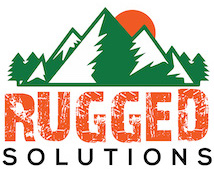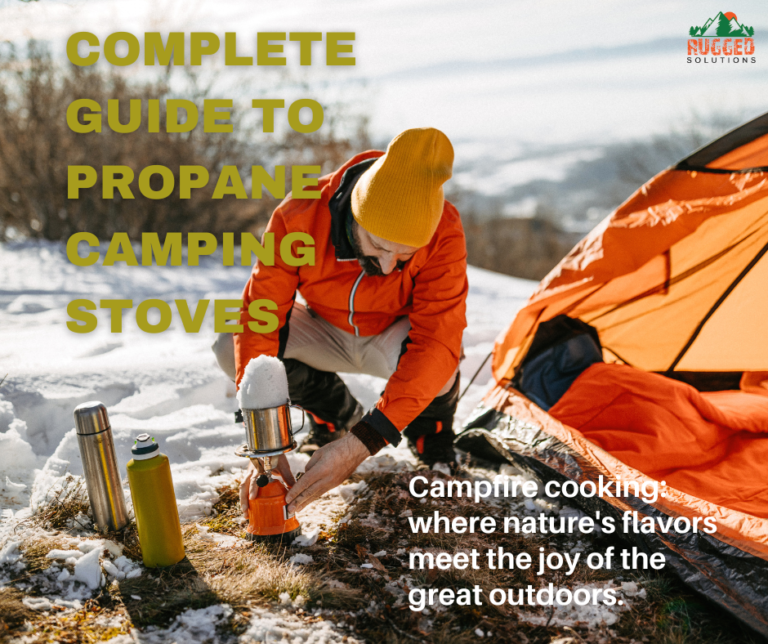
Complete Guide to Propane Camping Stoves

- Taylor Gomes
- Emergency Paramedic
Welcome to the world of propane camping stoves—your ultimate guide to efficient outdoor cooking. Let’s face it, everyone needs some sort of camping stove if they’re going to be spending any length of time outdoors away from fast food… Propane camping stoves have been around since the mid-20th century. As propane development was understanding the need and developing more convenient portable options. All this leads us to the options we have today. Streamlined, state-of-the-art technology poured into our every-day camping trips.
Check it out as we explore the variety, features, and best options of propane camping stoves. Whether you’re a seasoned camper or just starting your outdoor journey, we’re here to give you the information you need to help you on your propane camping stove journey.
In all seriousness, this guide will cover various aspects to help everyday people make informed decisions when choosing a stove for their camping trips.
The key areas include:
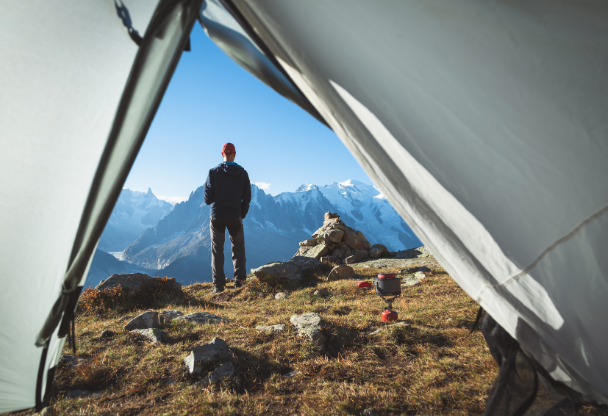
Introduction to Propane Camping Stoves:
The history of the propane camping stove dates back to the early 20th century. The evolution of these stoves came from meeting the needs of campers, hikers, and explorers seeking a reliable and portable solution.
Propane Camping Stoves Enter the Scene
Once propane was an approved mobile fuel source, it quickly became the fuel of choice among campers. And for obvious reasons, propane burns much cleaner, with maximum BTU’s as opposed to its liquid competitors.
Early Innovations
Initially, campers used stoves fueled by kerosene or gasoline. And these stoves did work, but they were much bigger and significantly more dangerous to use.
Design Improvements
As the camping community continued to use propane with their camping stoves at increasing rates, the need for improvements on designs was painfully obvious and the cost continued to rise. The direction seemed to be that the more lightweight and compact, the better. This largely came from the specialty needs of minimalist hikers, like backpackers.
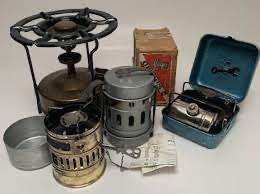
Specialized Designs
As the trend of camping began to hit the mainstream, the need for yet more adaptation was in order. From single burners to now large families or groups getting into camping and needing large propane camping stoves with multiple burners.
Modern Upgrades
As technology has improved, it has made these stoves better and better. Giving them abilities such as advanced head distribution systems, wind-resistant burners, collapsible designs, and waterproof burners, just to name a few.
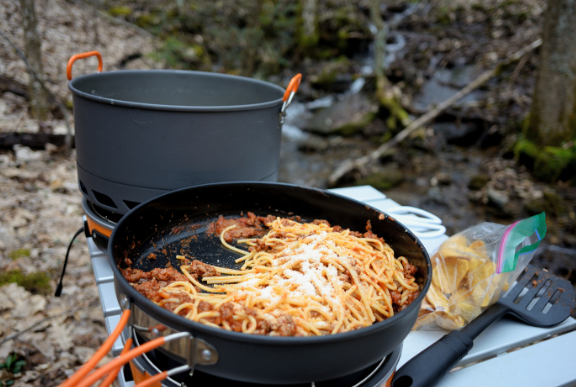
Environmental Considerations
Protecting the environment and preserving it for future generations is incredibly important. Modern propane camping stoves are designed to minimize their carbon footprint. Manufacturers focus on improving fuel efficiency and reducing emissions.
The story of these stoves is similar to many other products we use and love today. Competition and technology are driven by consumers demand for quality and affordable products.
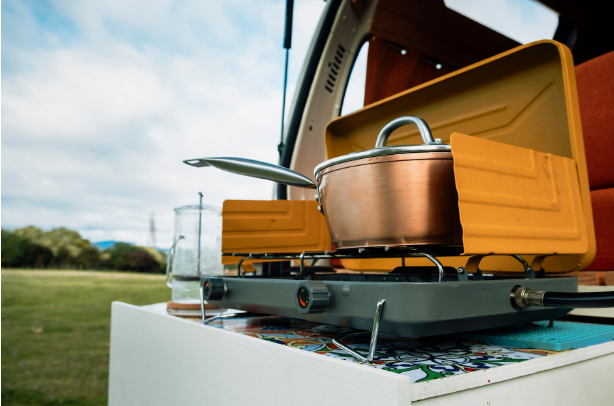
Pros
Cons
1. Compact and Portable
The more propane camping stoves were around, it seemed, the smaller they seemed to be getting. As they became more portable and compact, it became extremely easy to pack and carry them to and from campsites. As well as fitting into very small spaces like a backpack for hikers out backpacking the trails.
Extreme Cold Inconsistency
At extremely cold temperatures, the fuel doesn’t vaporize as well and can cause lower amounts to be released, therefore bringing your BTU down and cooking slower.
2. Faster Cooking with Less Fuel Consumption
The consistency of the flame providing constant heat set propane camping stoves apart, cooking food faster with less fuel. The ability to adjust the flame gave campers the range they needed, from simmer to boil.
Fuel Tank Limitations
Due to the specifics of the tank size, if you happen to run out of fuel on your backpacking trip, it can be difficult to find more fuel. In my experience, though, if there’s a Walmart close, you’re good. They sell them in two packs in portable size.
3. Variety of Models
Whether you are needing a single burner, a double, a compact fold-up, or a Big Daddy 4 burner, you can find a large selection of different options for the specific needs of your family or group.
Expense
In comparison to similar fuel types, propane is more expensive and could become an issue for some campers on a tight budget.
4. Clean Fuel Source
When it comes to clean-burning fuels, propane is one of the leading fuels used. This is because of its minimal smoke and residue, which makes cooking your food much easier and more enjoyable.
Flame Control
Occasionally, you can find propane-burning stoves that don’t have much variation in the flame. It is either all the way on or off, which can make cooking challenging with certain items.
5. Easy to Maintain and Use
When you are out in the boonies and it’s time to cook for a lot of people, you better hope you have the grill all set up and ready to go. Propane camping stoves are very beginner-friendly, and the valves and parts are easy to maintain for proper working order.
Environmental Footprint
It is true that propane burns very cleanly; however, the production and transportation of propane can have a significant impact. Some people prefer to go with a fuel type that is more eco-friendly.
6. Reliability
It is important to consider the weather conditions of where you will be when needing to use your camping stove. Propane offers benefits that were not previously available with alternative fuels, like use in freezing temperatures.
Noisy
Portable propane stoves have that hissing sound and can be quite distracting and loud. Some people go with a quieter option, but this is just purely based on preference.
7. Safety
Technology has come a long way to keep us safe, and camping stoves are no different. Propane camping stoves offer built-in pressure regulators. As well as that smell you get if you expel any gas into the surrounding air—that rotten egg smell. This smell is added to the fuel so we can notice if there is a leak of this highly flammable substance.
Safety Concerns
While propane is generally safe to use, as a paramedic, I can’t tell you how many times I’ve had to respond to cooking stove accidents. I would be remiss if I didn’t say, as most people do, that this is a highly flammable fuel under pressure. Be smart. Be safe.
This list can assist you in making the best decisions when it comes to your cooking needs. As you can see, there are an array of things that place propane cooking stoves at the top of the list when making this selection.
Key Features to Look For:
When choosing a propane camping stove for your needs, it is important to look for some key features or standards. A good way to start this is to really think about what the needs of you and your family or group are. Which of these is important to you, and which ones can you skip if need be. I have been placed in a variety of different environments throughout my career, and not all propane camping grill’s are created equal.
BTU Output
The BTU (British Thermal Unit) output is the amount of heat coming from your burner. Higher BTU means not only faster cooking but also more resistance to the elements, like wind.
Fuel Usage
Some stoves are better at being fuel-efficient than others. Just a reminder that if your stove burns through fuel quickly, make sure to bring more than you need.
Burner Configuration
This will depend on the type of camper you are and the space you need. Whether its a single-burner collapsible or multi burner, you’ll want to make sure you have ample space to store, transport, and use your propane grill.
Cooking Surface
When deciding what cooking surface you need, it will come down to either cast iron or stainless steel. Cast iron holds up well to boiling and distributes heat much better, and it sure makes your food taste pretty good too, if its well seasoned and taken care of.
You will also want to keep in mind the burner size. You need larger burners when using large pots and pans for more people, as opposed to smaller, compact cookware that needs a small burner and less BTU to properly heat.
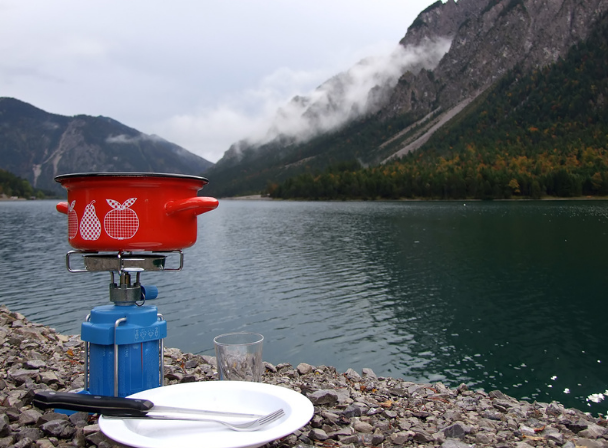
Regulator and Pressure Control
Look to make sure that your prospective propane stove has a pressure control regulator included. Most do, but just in case, this device allows the high-pressure propane tank to slowly disperse fuel as needed by the user’s desired flame.
Easy Maintenance
This goes with any piece of equipment, and I have often overlooked it, only to regret it down the road. Make sure it’s easy to disassemble your propane stove and all its parts for cleaning and maintenance.
Wind Resistance
Many outdoor trips are ruined by a sudden change in the wind, don’t let this be you. Check out the types of weather that are generally in the areas where you like to go camping and take trips. Some camping stoves have features like wind shields and built-in wind resistance.
Brand and Reviews
I have added some recommendations down below. Definitely do some research on the different options each of the brands you like offers. And reviews are always important to look at, giving real-life application to these items and their performance.
Types of Propane Camping Stoves
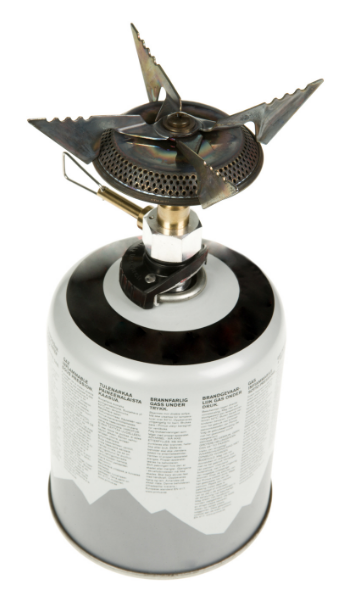
Ultra Portable Backpacking Stoves
Compact, light, and reliable. Every backpacker’s dream. These stoves get the job done—nothing fancy. When you are hundreds of miles from civilization, reliability plays a major role. In my opinion, it’s the best backpacking stove.
Compact Camp Stoves
As camp stoves go, these stoves are perfect for car camping or short trips. Slightly larger than the backpacking stove, multi-burners have become an option. Giving more flexibility.
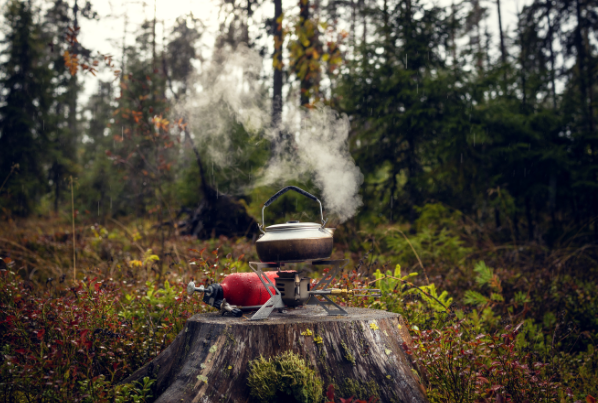
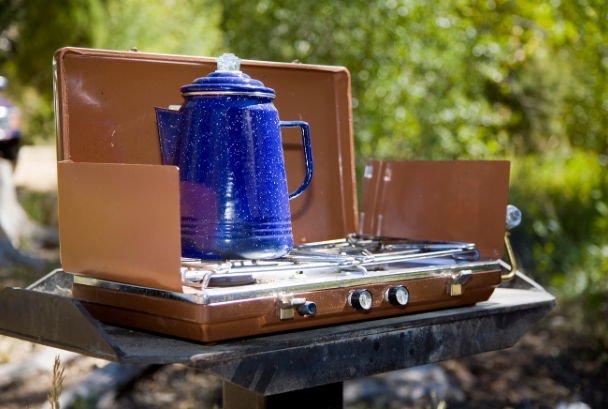
Tabletop Stoves
More common, these stoves are designed just as the name suggests—to sit on a table. While the table offers great support and stability, there isn’t always a table available, which can make cooking challenging.
Cooking Systems
This is a unique take; these kits come with everything you need and are designed to work together, providing the user with efficiency in a compact design. Popular among backpackers.
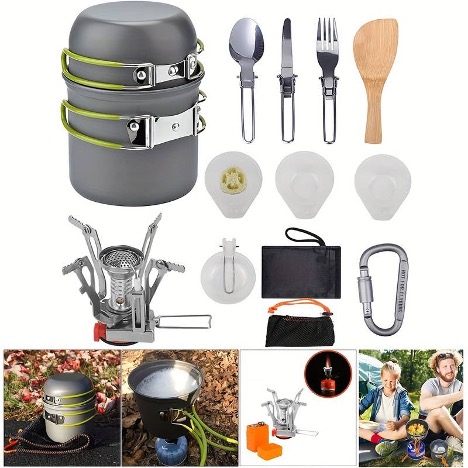
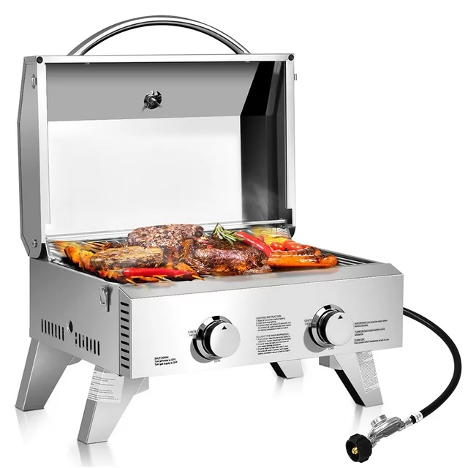
Grill Style
Attempting to be as similar as a backyard grill, these grills have a larger cooking surface and often have accessories you can add, like a side burner or griddle.
Base Camp Propane Camping Stoves
Robust and sturdy, designed for large groups of people, these stoves put off some serious BTUs but take some time to set up and take down. Often with four or more burners, this stove gives more space to cook meals, will handle all the needs of the entire group.
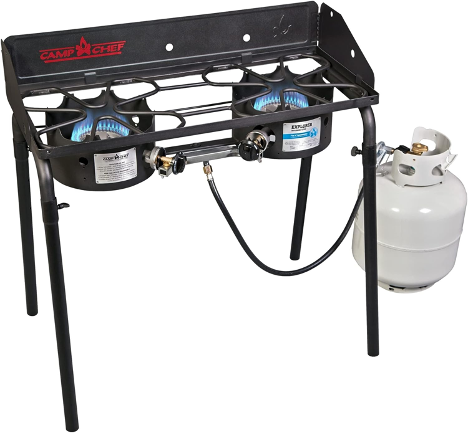

Oven Combo Stoves
In addition to the normal burners, some stoves even have an oven or roaster attached for those who really enjoy roasted or baked food. It might be nice to have some freshly baked cookies out in the woods.
Canister Top Stoves
Single burner, with the attachment directly above the burner, these stoves are very portable and popular when real estate is in short supply. I use this type of stove all the time on my wildland fire deployments.
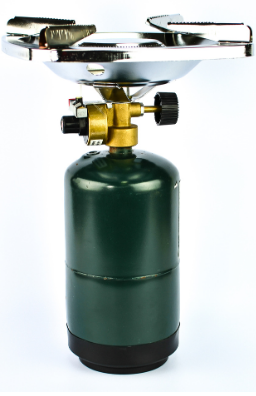
There is a propane-burning camping stove for every adventurer. As you can see, there are a variety of options on different stoves, both that come standard and that you can add on. Identifying your needs and the needs of your group will be the best starting point when deciding which type of stove to get.
More Things to Consider
Simmer Control
As simple as it sounds, not all propane stoves have the availability to control the amount of fuel being released to that finessed level. When you are looking at stoves to purchase, make sure to check that they can toggle between simmer and boil, as well as check the arrangement of the burner to see if the heat is disbursed in the center or a larger circle.
Ignition System
So, as you guessed, it’s important to know which type of ignition system you would like on your camping stove. Whether it is a match start, push button, or electronic ignition, know which kind you would prefer ahead of time so that you can avoid a costly mistake. And also remember that if you do go for the technology versions, be sure to always pack extra batteries.
Altitude
If you camp at high altitudes, typically above 10,000 feet, you may want to look into other fuel types, such as butane. At high elevations, propane doesn’t burn as well, and the last thing you need to know why you are hiking that high is an issue cooking your dinner after a long day hiking.
Construction Materials/Made in USA
When it comes to the longevity of your stove, you’ll want to check the materials that it is made from as well as where it is made. Products made in the U.S. tend to be made better. And it is good to look for aluminum or stainless steel for the construction materials, as these won’t rust and will hold up to high temperatures.
Boil Time
Some stoves with higher-rated BTU will have quick boil options, while others will just have standard burners. While the standard burners still boil water very quickly, they are nothing close to those quick-boil stoves. Most camp stoves have a boil test time listed.
Different Fuel Options
Propane is the primary focus of this article; however, there are other fuel options that you may want to look at if you need something specific. For instance, propane produces more heat than butane and is more efficient in combustion. But butane has a silver lining: it is better for the environment because it liquifies easily, making it easier to contain, and it can be purchased in small quantities. This makes it easier for campers who need compact items. Don’t forget that neither propane nor butane harms the environment in the long term.
Compact For Storage
Most propane stoves have collapsible designs, making them extremely compact and ideal for campers with less gear and minimal storage. Others have to be completely disassembled; whatever your preference, check to see your stove’s design.
Additional Addons
Some stove’s manufacturers offer add-ons to the stove to enhance your cooking and camping experience. Some of these include built-in grills, griddles, covers, extra side burners, and more.
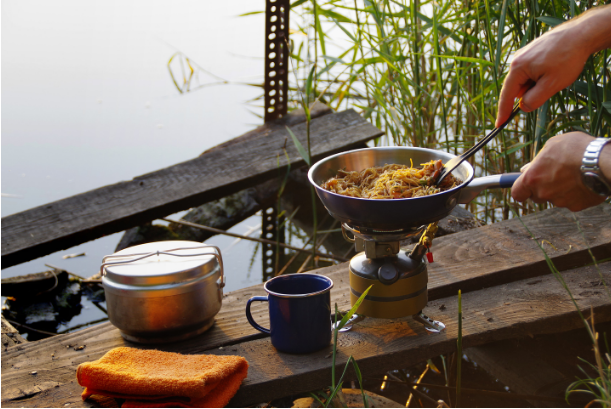
Safety Considerations
Read the Manual:
What would a safety considerations section be without adding the recommendation to read the manual. As simple as these stoves look sometimes there’s some little nuance or rubber O ring you forgot to place…not saying i’ve every done that or anything. 😉
Checking for Leaks:
- Speaking of missing O rings, it goes without saying, but I’ll say it anyway: check your hoses and connections for leaks and worn parts.
- If you need to check the hose line for leaks, a simple way would be to put some soapy water in a bin and run the length of the hose line, checking for bubbles.
Ventilation:
- When it comes to ventilation, we need to first talk about carbon monoxide. It is what is produced when there isn’t enough oxygen in the air to burn the propane completely. It is colorless, odorless, and will kill you. This is why we say to make sure to use your stove in a well-ventilated area.
- The other reason is so that you don’t catch yourself, anyone else, or anything else on fire, including trees overhead, etc.
Ignition:
There are a couple ways your stove will ignite.
- One way is by electric start. You’ll want to make sure that your push button is working properly and that you can see a spark where the igniter is located.
- Another way to start your propane stove is by match. Some stoves require this manual start method. Be sure to make sure the area where you are lighting is free from debris and you can see through the glass clearly to place the match in the correct location.

Fire Extinguisher:
It is a good idea to have a fire extinguisher with you whenever you are using flammable gases. Camping stoves are no different. They can malfunction just like anything else and overhead, and who knows what else? Be prepared to put that puppy out if need be.
Propane Storage and Handling:
- With any flammable gas, you want to take extra precautions in the way you handle the tanks. Make sure to inspect tanks for damage or potential points of failure.
- When storing your propane tanks, make sure they are stored in a well-ventilated area and held securely in place. Be sure to follow the specified instructions listed on your propane tank.
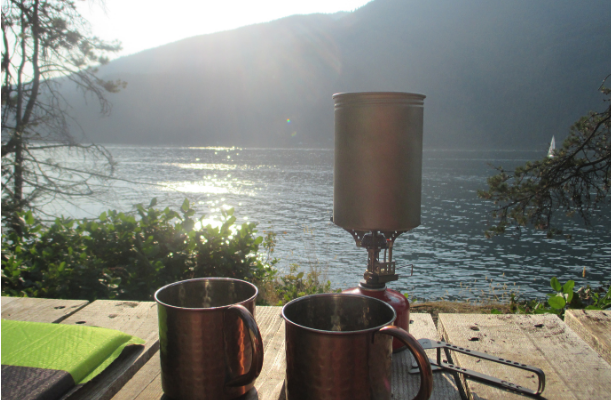
Maintenance
Cleaning:
After each use, the stove should be cleaned. Removing any food, debris, grease, or anything else that could cause problems with the function of the stove. If you let grease build up, there’s a good chance you’ll have a grease fire at some point. Water doesn’t put these out. Back to that fire extinguisher.
Hoses and Tanks:
We already touched on this earlier, but you’ll want to make sure to inspect these pretty regularly, as they are the most important part of the stove when it comes to function and your safety.
Burners and Ignition:
Closely inspect to make sure there are no clogs from cooking or lighting materials. Burners tend to clog from grease dripping into them. In order to have even flow throughout your burner, these will need to be cleaned and functioning properly.
Storage:
Make sure to store your propane camping stove in a cool, dry place, protected from any direct sunlight. Keep the stove out of the elements, to prevent rusting, premature corrosion, and aging.
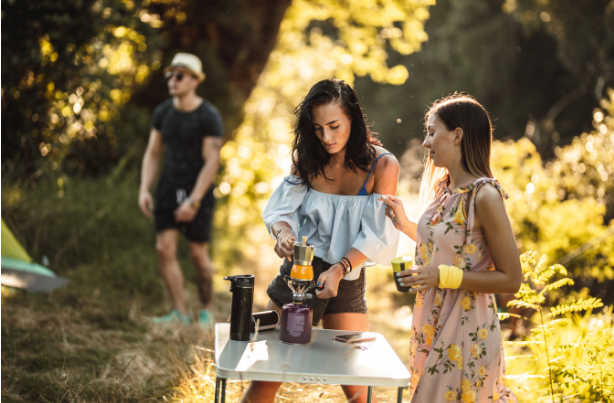
Manufacturer Recommendations:
Check to see what these are, there is usually a maintenance schedule listed, for lubrication and other recommended maintenance items from the manufacturer.
Worn or Damaged Parts:
When it comes to damaged or very worn parts, I recommend just replacing them immediately. You are dealing with an extremely flammable gas that is under pressure and has igniting sources all around it. Don’t be lazy with this; change the parts necessary before they become dangerously worn or broken.
How People Are Using Propane Camping Stoves:
Caitlyn’s Freezing Rescue:
Caitlyn was camping in the mountains when, overnight, the temperatures suddenly and unexpectedly dropped to below freezing. Unprepared for this abrupt change, Caitlyn’s only source of heat was her stove, where she was able to not only cook the food she needed but also used boiling water to drink and keep warm. She now, and rightfully so, doesn’t go anywhere without her portable propane camping stove, any other stove would have likely failed at those low temperatures.
Greg’s Proposal Save:
Greg took his girlfriend camping and planned to propose to her at a private catered dinner at his campsite. When suddenly, at the last minute, the catering company cancelled due to a double booking, there was not enough time to find another caterer. Remembering he brought his camping gear, Greg grabbed his camping stove and put his buddies to work preparing for the meal. We are happy to say it went off without a hitch, and they are happily married and continue to use that stove to this day.
Campfire Stove Becomes Family Fire Pit:
The Hernandez family gets together every Sunday afternoon to enjoy a family barbecue dinner. As the sun sets and everyone is full from the delicious food, they all move the camping stove to the backyard and gather around it like a fire pit and talk. They enjoy talking and catching up with one another. It has become a focal point of their week, which they say is where many fond memories are made.
Nick’s Backpacking Storm:
Nick is a veteran backpacker and often takes the route through the Sierras that he was taking at this particular time. However, he didn’t know that a cold front was moving in behind him, and he was in for some rough weather. Being the beginning of the season, he feared a snowstorm. During the storm, he was still able to use his backpacking stove due to its wind protection features, making it a lifesaver for riding out the storm.
Nancy’s Backyard Campground:
Nancy, a single mom who works two jobs just to get by, often doesn’t have the time to take her two kids the 3-hour drive to the mountains to go camping. But Nancy loves camping in the outdoors and always comes through for her kids; she turned her backyard into a full campsite with a tent, picnic table, and chairs, complete with a two burner stove. All three of them enjoy camping every weekend—sometimes in the yard, sometimes in the mountains.
Environmental Impact
Understanding the environmental impact of propane camping stoves allows campers to be informed when making choices about the products they use time and again. This information helps campers find the balance between adventure and environmental responsibility.
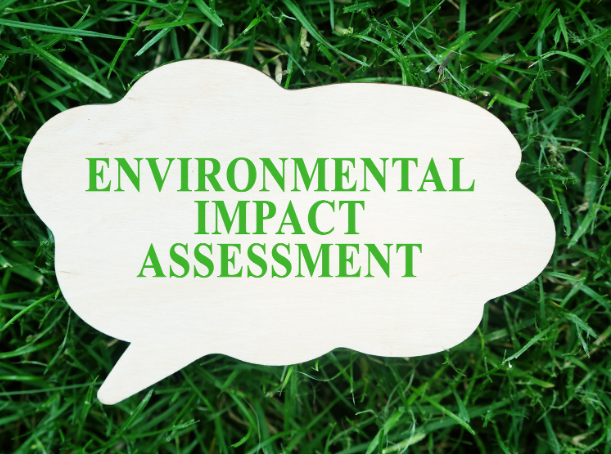

Clean Burning Fuel:
With propane burning, there are fewer incomplete products of combustion, which is why you don’t see much smoke. Due to the lower amounts of pollutants and greenhouse gases, propane is considered a clean fuel source. This makes propane camping stoves an environmentally sound decision, especially where air quality issues exist.
Carbon Emissions:
While propane is a clean-burning fuel, it does release carbon dioxide (CO2) when it is burned. Being mindful of one’s carbon footprint is a good practice when enjoying the natural world.
Process of Making:
Propane is made by the processing of natural gas and the refinement of oil. That process can have environmental implications. Environmentally sustainable processes are being improved, and responsible suppliers have become harder to find.
Recyclable Propane Tanks:
When selecting the type and size of propane tank, keep in mind your end game with these tanks. Whether to refill or recycle, these canisters all to often end up in landfills.
“Leave No Trace”
Practicing this ideal is essential for so many of us to continue to enjoy the natural world around us without polluting and damaging the ecosystem. Make sure to not overuse stoves, recycle tanks properly, or refill tanks. Always leave a campsite better than you found it.
Alternative Energy Sources:
As technology moves forward, new ways to heat food are discovered. Methods like solar power and electric camping stoves are available. With an eco-minded approach to the best camping stoves, these methods offer an alternative energy source.
Our Top 5 Propane Camping Stoves:
From compact collapsible designs to multi-burner freestanding propane stoves, we’ve put together a brief but solid list of our top 5 best camping stoves. We have included links to where you can get more information and purchase these stoves. No, we are not making any commissions or money from these recommendations.
| Stove | BTU (each burner) | Auto-Ignition | MSRP |
|---|---|---|---|
|
1. Camp Chef Mountaineer 2x |
20,000 | Yes | $390 |
|
2. Coleman Cascade Classic |
10,000 | Yes | $100 |
|
3. Camp Chef Everest 2x |
20,000 | Yes | $190 |
| 4. Jetboil Genesis Basecamp | 10,000 | Yes | $300 |
| 5. Camp Chef Explorer | 30,000 | No | $149 |
Camp Chef Mountaineer 2X
These camp stoves is powerful, which aids in its excellent wind resistance. And even with all that power, it is still one of the most fuel-efficient propane stoves on the market. Though it is expensive, you get what you pay for with this one.
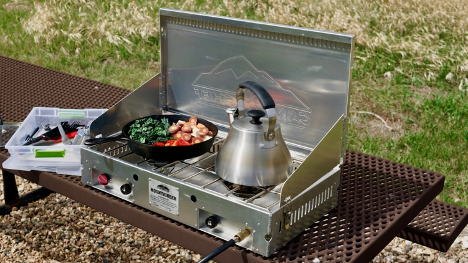
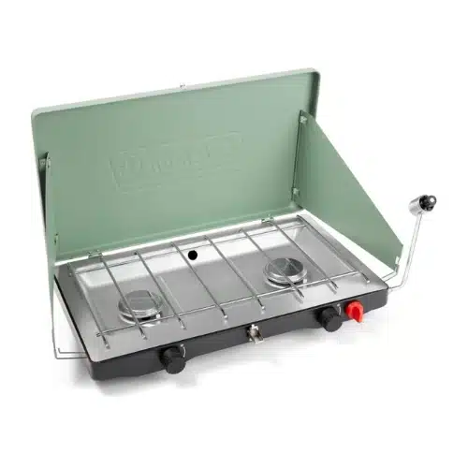
Coleman Cascade Classic
This is an update from a previous model. Coleman added simple-to-use flame control knobs, which is a vast improvement from previous models. However, with this improvement, it is still not as easy to control a simmer as the next stove on our list.
Camp Chef Everest 2X
This stove is powerful, with 20,000 BTU, and offers great wind resistance. Even with all that power, it still has the ability to cook low and slow with a great simmer. This propane stove is quite versatile and has a midrange price. Some consumer complaints suggest the durability of the materials is not as good as other propane camping stoves.
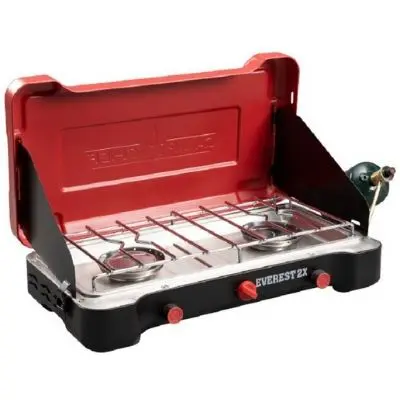

Jetboil Genesis Basecamp
This clamshell design makes this stove very compact when closed up and is really cool-looking. It offers a windscreen attachment that protects the stove on 3 sides. With a heavier price tag and not being easy to use due to the sleek design. It also has lower power than cheaper stoves at 10,000 BTU.
Camp Chef Explorer
This stove is a freestanding one, making the need for a tailgate or table irrelevant. At 30,000 BTU, the larger cook surface accommodates larger pots; this is the ideal propane stove for cooking large amounts of food. One major problem with its design is that it is large and heavy and doesn’t collapse as well as the other stoves. This stove offers lots of power and great burner control at a reasonable price, and is one of the best camping stoves available.
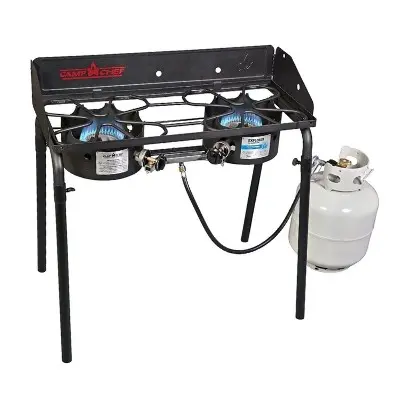
When it comes to the outdoors, being able to cook your favorite meals takes a good experience to a great one. Whether you are car camping or going on a backpacking trip, on a tight budget or need some luxury, compactness, or ease of use, it is evident that there is a propane camping stove for every need and niche in life. The camping stove will continue to evolve, adding new features and abilities. Wind resistance, simmer controls, and fast boil options are just the beginning. Wherever the great outdoors take you, make sure to bring this cooking companion along for the ride.
These camp stoves will continue to evolve, adding new features and abilities. Wind resistance, simmer controls, and fast boil options are just the beginning. Wherever the great outdoors take you, make sure to bring this cooking companion along for the ride.
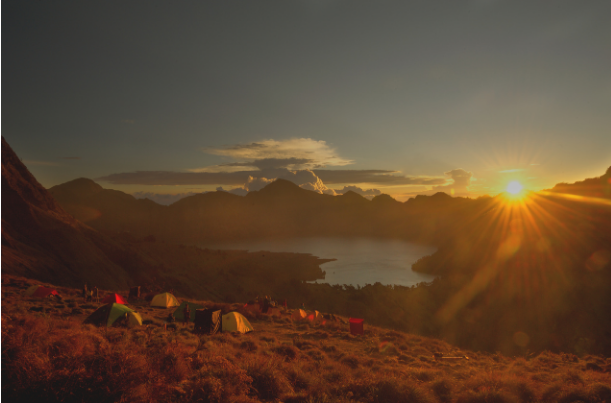
Thank you so much for reading. We have enjoyed taking a deep dive into the world of propane camping stoves. We hope you have found the information you were looking for. Please feel free to leave a comment or ask any questions. We are here to help!
Stay Rugged!
Taylor
Founder, Rugged Solutions
